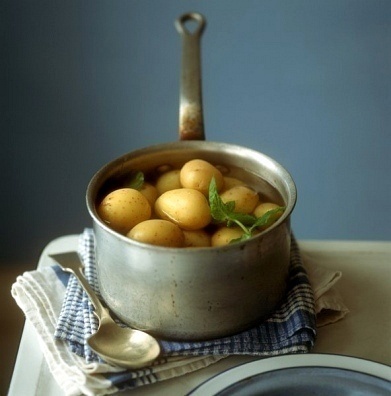How to Boil Beets
Beets are a nice variety of root crops. They can be cooked and prepared many ways for delightful recipes that you and your family will surely enjoy.
Beets 101
Before we dig deeper on how to boil beets, however, let us first have a tutorial on the basics of this crop.
Beets are good to grow in your own backyard. They come in handy for salads and stews and soups and other recipes. They are delicious and very nutritious.
The secret to cooking the best beets is picking the freshest ones. If you do not grow them in your own garden, there are some things that could help you tell how fresh the beets available in your local market are.
You can tell fresh beets by the stalks or leaves attached to them. If they are freshly harvested, the leaves attached would be bright green. In case the leafy greens have been cut, your beets may not be freshly picked but they are still good for cooking. Make sure that the beets you are buying are still firm and hard. There should be no soft spots anywhere.
Raw beets can be stored in the refrigerator for a few weeks. Just make sure to trim down the stalks. You may store cooked beets in the refrigerator for a few days.
How to Boil Beets
How to boil beets is a simple task, especially if you know the certain factors that may affect the outcome of your recipe. We will give you a helpful guideline along with he all-important tips that will ensure a good, flavorful, and tasty outcome.
When cooking beets, especially when boiling, you should not take the skins off. This will help retain the flavor. If you take the skins, the flavor and the color of your beets will escape to the water. It is advisable that you keep at least an inch of the stalk and the root ends to ensure that the flavors are intact even after they are cooked.
The only thing you need to do to prepare your beets for boiling is cutting off the stalks, leaving at least an inch on, and washing it under running water. It is advisable that you pick similarly sized beets for boiling at the same. This will no longer require you to alter cooking times.
Make sure that in the process of washing and wiping your beets with paper towels, you will not slice or damage the skin. Any nic could result to the beet juice escaping.
Place the beets in a pot. Put in enough water that will cover your beets and have an allowance of two inches. Cover the pot and allow it to boil. As it reaches its boiling point, lower the heat to medium and let your beets cook for 30 to 45 minutes, depending on the size of the batch. If there are small beets in the batch you are boiling, make sure to remove them from the source of heat once they are done and wait for the rest to cook.
Beets are already cooked when you can pierce it easily with the tip of your knife or fork.
Once cooked, you can rub the skin off with your hands or peel it with a paring knife. Submerge the boiled beets in cold water so they are easy to peel.
Beets Tips and Tricks
Here are some tips and tricks that will help you cook beets right.
Tip #1: Keep the beets cooking in a covered pan. If you are cooking the stalks only, make sure not to cover the pan or pot. Beet leaves can be used for other recipes if they are healthy and still crisp.
Tip #2: You may add some salt and sugar to the boiling beets to enhance its flavor. If you have another recipe in mind, you may season your beets accordingly.
Tip #3: If you are cooking old, out of season beets, you may want to soak it overnight in cold water so they will cook faster.
Tip #4: If you cannot stand the smell of boiling beets, you may want to place a toasted crust in a bag and boil it along with the beets. This is better than discarding the beets water altogether as you will lose a lot of important minerals along the way. You can use the water to make a healthy and nutritious soup.
Tip #5: Don’t discard leftover boiled beets. You may use them in salads and soups and as a garnish. But make sure they are still good to it. If they are already stale or sour, they are only good for the trash.
Tip #6: Beets are rich in essential nutrients that can aid in your digestion as well as in normal blood flow. You can serve it a lot of ways, including raw, in a salad.







